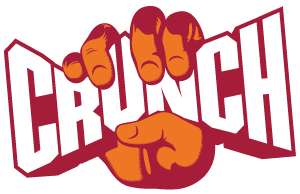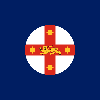Embarking on a Pilates journey can be an exciting and transformative experience. Whether you’re looking to improve your flexibility, build strength, or enhance your overall well-being, Pilates offers a holistic approach to fitness. If you’re new to Pilates and preparing for your first class at Crunch Fitness, this guide will help you feel prepared, confident, and ready to make the most out of your workout.
1. Understanding Pilates
Pilates is a low-impact exercise method that focuses on strengthening muscles while improving postural alignment and flexibility. Developed by Joseph Pilates in the early 20th century, it emphasises core strength, controlled movements, and mindful breathing. Pilates can be adapted for various fitness levels, making it an excellent choice for beginners and advanced practitioners alike.
2. Choosing the Right Class
At Crunch Fitness, we offer a variety of Pilates classes to suit different needs and experience levels. Here’s a quick overview of the types of classes you might encounter:
- Mat Pilates: This class focuses on exercises performed on a mat using your body weight for resistance. It’s an excellent starting point for beginners as it covers the fundamentals of Pilates.
- Reformer Pilates: This class uses the Reformer machine, which adds resistance to your movements through springs and pulleys. It’s great for building strength and flexibility.
- Pilates Fusion: These classes combine traditional Pilates exercises with other fitness modalities like yoga or barre for a dynamic and varied workout.
Choose a class that aligns with your fitness level and goals. If you’re unsure, don’t hesitate to ask our staff for recommendations.
3. What to Wear and Bring
Wearing the right clothing and bringing the necessary items can make a significant difference in your comfort and performance during your Pilates class. Here’s what you should consider:
- Clothing: Wear form-fitting, comfortable clothing that allows you to move freely. Avoid overly loose clothes as they can get in the way during certain exercises. Leggings, tank tops, and fitted t-shirts are great choices.
- Footwear: Pilates is typically done barefoot or with grip socks. Grip socks provide extra traction and can help prevent slipping, especially on the Reformer.
- Water Bottle: Staying hydrated is crucial, so bring a water bottle to keep nearby during your workout.
- Towel: A small towel can be useful for wiping away sweat during the class.
- Mat (Optional): If you prefer to use your own mat for hygiene reasons, feel free to bring it along. However, mats are usually provided in the studio.
4. Arriving at the Studio
Arrive at the studio a little early, especially if it’s your first time. This will give you plenty of time to check in, familiarise yourself with the space, and meet your instructor. Here’s what to expect:
- Check-In: Sign in at the front desk. Our friendly staff will assist you with any questions and direct you to the Pilates studio.
- Introductions: Introduce yourself to the instructor and let them know it’s your first class. They’ll provide guidance, help set up your equipment, and offer modifications if needed.
5. During the Class
During your first Pilates class, it’s essential to focus on learning the basics and understanding the flow of the exercises. Here are some tips to help you get the most out of your session:
- Listen to Your Instructor: Pay close attention to the instructor’s cues and demonstrations. They’ll guide you through each movement, emphasising proper form and technique.
- Focus on Breathing: Breathing is a fundamental aspect of Pilates. Inhale deeply through your nose and exhale fully through your mouth. This helps engage your core and maintain rhythm throughout the exercises.
- Engage Your Core: The core, or “powerhouse,” is the foundation of Pilates. Engage your abdominal muscles to support your movements and maintain stability.
- Move with Control: Pilates emphasises controlled, precise movements rather than speed. Focus on quality over quantity, and don’t rush through the exercises.
- Listen to Your Body: It’s normal to feel challenged, but avoid pushing yourself too hard, especially in your first class. If something feels uncomfortable or painful, let your instructor know and take a break if needed.
6. After the Class
After your Pilates class, take a few moments to cool down and reflect on your experience. Here’s what you can do:
- Stretch: Gentle stretching can help relax your muscles and improve flexibility. Your instructor may guide you through a cool-down routine.
- Hydrate: Drink plenty of water to rehydrate your body.
- Ask Questions: If you have any questions or concerns about the exercises or your form, don’t hesitate to ask your instructor. They’re there to help you succeed.
- Plan Your Next Class: Consistency is key to seeing progress in Pilates. Schedule your next class and set a regular routine to keep yourself motivated and committed.
7. Benefits of Pilates
As you continue with your Pilates practice, you’ll start to notice various benefits, including:
- Improved Core Strength: A strong core supports better posture and reduces the risk of injuries.
- Increased Flexibility: Pilates enhances flexibility and joint mobility, making everyday movements more comfortable.
- Better Posture: Pilates helps correct imbalances and strengthens postural muscles, leading to better alignment.
- Enhanced Mind-Body Connection: The focus on mindful movement and breathing can reduce stress and improve mental clarity.
- Overall Fitness: Regular Pilates practice contributes to overall fitness, including increased muscle tone and endurance.
Starting Pilates at Crunch Fitness is a wonderful way to embark on a journey towards improved health and well-being. By understanding what to expect and following these tips, you’ll feel more confident and prepared for your first class. Remember, every expert was once a beginner, and with consistency and dedication, you’ll soon experience the many benefits Pilates has to offer. Join us at Crunch Fitness and take the first step towards a stronger, more balanced you!


Crunch Fitness Virtual Assistant
 AU
AU United States
United States Canada
Canada Costa Rica
Costa Rica Spain
Spain Portugal
Portugal NSW Clubs
NSW Clubs VIC Clubs
VIC Clubs